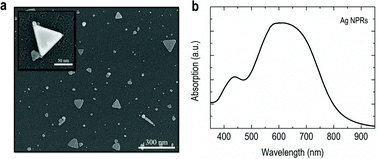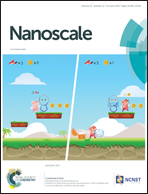Flexible random lasers with tunable lasing emissions†
Abstract
In this study, we experimentally demonstrated a flexible random laser fabricated on a polyethylene terephthalate (PET) substrate with a high degree of tunability in lasing emissions. Random lasing oscillation arises mainly from the resonance coupling between the emitted photons of gain medium (Rhodamine 6G, R6G) and the localized surface plasmon (LSP) of silver nanoprisms (Ag NPRs), which increases the effective cross-section for multiple light scattering, thus stimulating the lasing emissions. More importantly, it was found that the random lasing wavelength is blue-shifted monolithically with the increase in bending strains exerted on the PET substrate, and a maximum shift of ∼15 nm was achieved in the lasing wavelength, when a 50% bending strain was exerted on the PET substrate. Such observation is highly repeatable and reversible, and this validates that we can control the lasing wavelength by simply bending the flexible substrate decorated with the Ag NPRs. The scattering spectrum of the Ag NPRs was obtained using a dark-field microscope to understand the mechanism for the dependence of the wavelength shift on the exerted bending strains. As a result, we believe that the experimental demonstration of tunable lasing emissions based on the revealed structure is expected to open up a new application field of random lasers.



 Please wait while we load your content...
Please wait while we load your content...